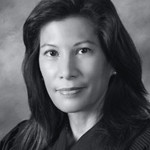One of the most-watched civil cases in the country, pitting California-based Chevron against what the New York Times called a “freelance” attorney, is headed for closing arguments this week in New York City. Over the last few weeks a parade of witnesses have testified about bribes, perjury and other allegations. The trial, before a federal judge not a jury, even has a de facto YouTube channel as parts of Joe Berlinger’s documentary “Crude” are posted.
At issue is a previous trial in Ecuador that resulted in judgement of more than $9 billion against Chevron, based on work done by Texaco before the later company was acquired by Chevron. In part, the case has become famous after a judge ordered that outtakes from the Berlinger movie could be seen as evidence for Chevron, not just the whole film. The unused footage apparently shows very candid conversations about intimidating judges and misrepresenting evidence, and is posted all over YouTube. Chevron is, in effect, suing Donziger under RICO laws.
Any Google search returns plenty of stories, but let us recommend this recent report from the New York Times that includes “… one after another, the witnesses, including some of his closest allies and financiers who are now estranged from his cause, have testified that Mr. Donziger committed witness tampering and fraud.” Read that here.
And for a more recent report, that’s much more sympathetic for Donziger, check out this interview-focused Adam Klasfeld piece in the Courthouse News Service.
